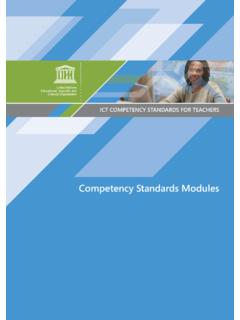Transcription of Second International Conference on Nutrition …
1 October 2014 ICN2 2014/3 Second International Conference on Nutrition Rome, 19-21 November 2014. Conference Outcome Document: framework for action FROM COMMITMENTS TO action . Background 1. There has been a significant improvement in reducing hunger and malnutrition of the world's population since the 1992 International Conference on Nutrition (ICN). Yet, progress in reducing hunger and undernutrition has been uneven and unacceptably slow. The fundamental challenge today is to sustainably improve Nutrition through implementation of coherent policies and better coordinated actions across all relevant sectors.
2 Purpose and targets 2. The nature of this framework for action is voluntary. Its purpose is to guide the implementation of the commitments of the Rome Declaration on Nutrition adopted by the Second International Conference on Nutrition held in Rome, Italy, on 19-21 November 2014. Building on existing commitments, goals and targets, this framework for action provides a set of policy options and strategies which governments 1, acting in cooperation with other stakeholders, may incorporate, as appropriate, into their national Nutrition , health, agriculture 2, development and investment plans, and consider in negotiating International agreements to achieve better Nutrition for all.
3 3. As governments have primary responsibility for taking action at country level, in dialogue with a wide range of stakeholders, including affected communities, the recommendations are principally addressed to government leaders. They will consider the appropriateness of the recommended policies and actions in relation to national needs and conditions, as well as regional and national priorities, including in legal frameworks. For the purpose of accountability, this framework 1. The term governments' is understood to include the European Union and other regional organizations on matters of their competency.
4 2. In this document, the term agriculture' comprises crops, livestock, forestry and fisheries. This document can be accessed using the Quick Response Code on this page;. a FAO initiative to minimize its environmental impact and promote greener communications. Other documents can be consulted at 2 ICN2 2014/3 for action adopts existing global targets for improving maternal, infant and young child Nutrition 3 and for noncommunicable disease risk factor reduction 4 to be achieved by 2025. Recommended set of policy and programme options 4. The following set of policy and programme options are recommended to create an enabling environment and to improve Nutrition in all sectors.
5 Recommended actions to create an enabling environment for effective action - Recommendation 1: Enhance political commitment and social participation for improving Nutrition at the country level through political dialogue and advocacy. - Recommendation 2: Develop or revise, as appropriate and cost National Nutrition Plans, align policies that impact Nutrition across different ministries and agencies, and strengthen legal frameworks and strategic capacities for Nutrition . - Recommendation 3: Strengthen and establish, as appropriate, national cross-government, inter- sector, multi-stakeholder mechanisms for food security and Nutrition to oversee implementation of policies, strategies, programmes and other investments in Nutrition .
6 Such platforms may be needed at various levels, with robust safeguards against abuse and conflicts of interest. - Recommendation 4: Increase responsible and sustainable investment in Nutrition , especially at country level with domestic finance; generate additional resources through innovative financing tools; engage development partners to increase Official Development Assistance in Nutrition and foster private investments as appropriate. - Recommendation 5: Improve the availability, quality, quantity, coverage and management of multisectoral information systems related to food and Nutrition for improved policy development and accountability.
7 - Recommendation 6: Promote inter-country collaboration, such as North-South, South-South and triangular cooperation, and information exchange on Nutrition , food, technology, research, policies and programmes. - Recommendation 7: Strengthen Nutrition governance and coordinate policies, strategies and programmes of United Nations system agencies, programmes and funds within their respective mandates. Recommended actions for sustainable food systems promoting healthy diets - Recommendation 8: Review national policies and investments and integrate Nutrition objectives into food and agriculture policy, programme design and implementation, to enhance Nutrition sensitive agriculture, ensure food security and enable healthy diets.
8 3. Namely: (1) 40% reduction of the global number of children under five who are stunted; (2) 50% reduction of anaemia in women of reproductive age; (3) 30% reduction of low birth weight; (4) no increase in childhood overweight; (5) increase exclusive breastfeeding rates in the first six months up to at least 50%; and (6) reduce and maintain childhood wasting to less than 5%. 4. Namely: (1) to reduce salt intake by 30%; and (2) to halt the increase in obesity prevalence in adolescents and adults. ICN2 2014/3 3. - Recommendation 9: Strengthen local food production and processing, especially by smallholder 5.
9 And family farmers, giving special attention to women's empowerment, while recognizing that efficient and effective trade is key to achieving Nutrition objectives. - Recommendation 10: Promote the diversification of crops including underutilized traditional crops, more production of fruits and vegetables, and appropriate production of animal-source products as needed, applying sustainable food production and natural resource management practices. - Recommendation 11: Improve storage, preservation, transport and distribution technologies and infrastructure to reduce seasonal food insecurity, food and nutrient loss and waste.
10 - Recommendation 12: Establish and strengthen institutions, policies, programmes and services to enhance the resilience of the food supply in crisis-prone areas, including areas affected by climate change. - Recommendation 13: Develop, adopt and adapt, where appropriate, International guidelines on healthy diets. - Recommendation 14: Encourage gradual reduction of saturated fat, sugars and salt/sodium and trans-fat from foods and beverages to prevent excessive intake by consumers and improve nutrient content of foods, as needed. - Recommendation 15: Explore regulatory and voluntary instruments such as marketing, publicity and labelling policies, economic incentives or disincentives in accordance with Codex Alimentarius and World Trade Organization rules to promote healthy diets.















